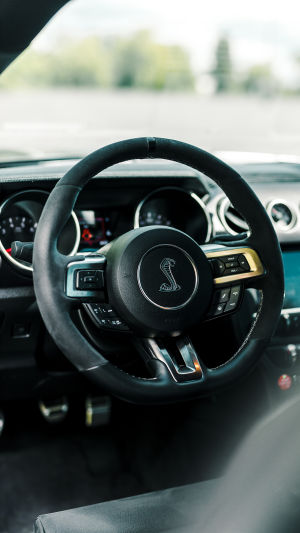The steering wheel is a crucial component of an automobile. Its historical development mirrors the overall evolution of automotive development.
An automobile consists of countless intricate components, with its progress and advancement composed of numerous incremental changes.
The steering wheel, a pivotal element, allows drivers to experience the interior's texture, chassis handling, and road sensation. Notably, the shape and size of the steering wheel invariably impact the driver's posture, greatly influencing their comfort during driving.
Originally, the design of the automobile's steering wheel drew inspiration from a boat's rudder. While functional, this rudder transmitted strong vibrations from the car's movement to the driver, complicating directional control.
As engines shifted to the front of cars, the rudder design became impractical due to increased weight. Thus, the steering wheel emerged, introducing a flexible and well-insulated gear system between the driver and the wheel, effectively mitigating harsh road vibrations.
The original steering wheel maintained its basic form for 24 years. Decades later, the steering wheel remained a simple wooden circle, primarily serving its executive steering role.
With power steering systems becoming prevalent, driving became progressively easier, and the steering wheel was gradually endowed with various additional functions.
Firstly, the steering wheel saw the addition of a horn button. In the 1980s, airbags were incorporated into the steering wheel's center to safeguard the driver's head, resulting in an enlarged center.
From the 1990s to the present, steering wheel functions diversified and integrated further. Notably, F1 racing car steering wheels exemplify the highest degree of functional integration, encompassing nearly all vehicle controls except for the brake and gas pedals.
Modern multi-function steering wheels commonly feature integrated function keys such as audio controls, car phone, paddle shifters, and even air conditioning adjustments.
Looking ahead, the proliferation of driving assistance technologies may prompt the integration of more functions into the steering wheel. This could entail numerous buttons, switches, digital displays, or even LED screens.
Alternatively, a future where autonomous driving is realized might eliminate the need for a steering wheel altogether, instead requiring a broad directional command mechanism solely for emergencies.
The extent to which future automation or self-driving technology will redefine the driver's role remains uncertain, but safety will invariably remain the foremost concern.
The steering wheel's evolution reflects the broader trajectory of automotive development. As automobiles continue to advance, the steering wheel will likely retain its importance, adapting to accommodate new technologies while ensuring driver safety and comfort.





